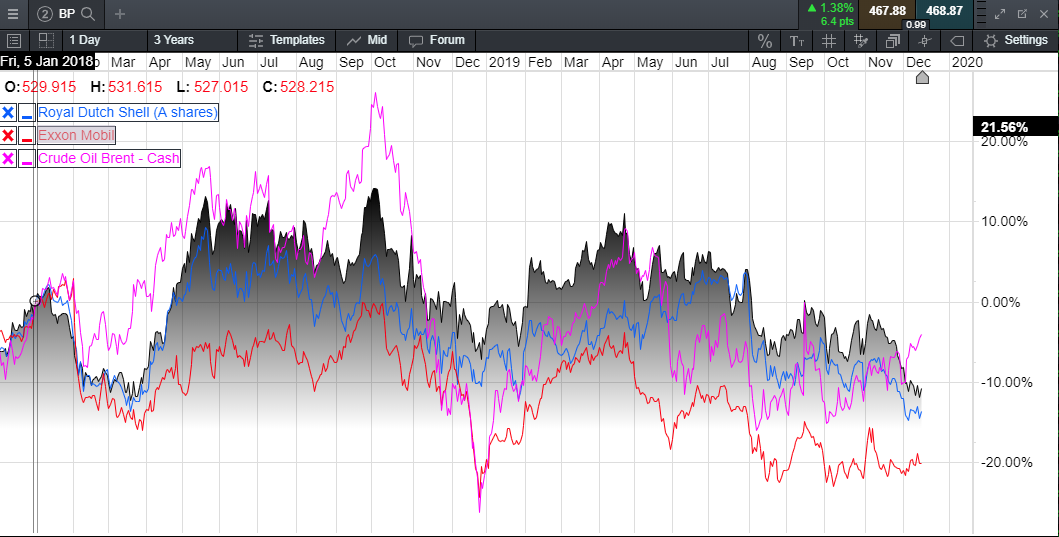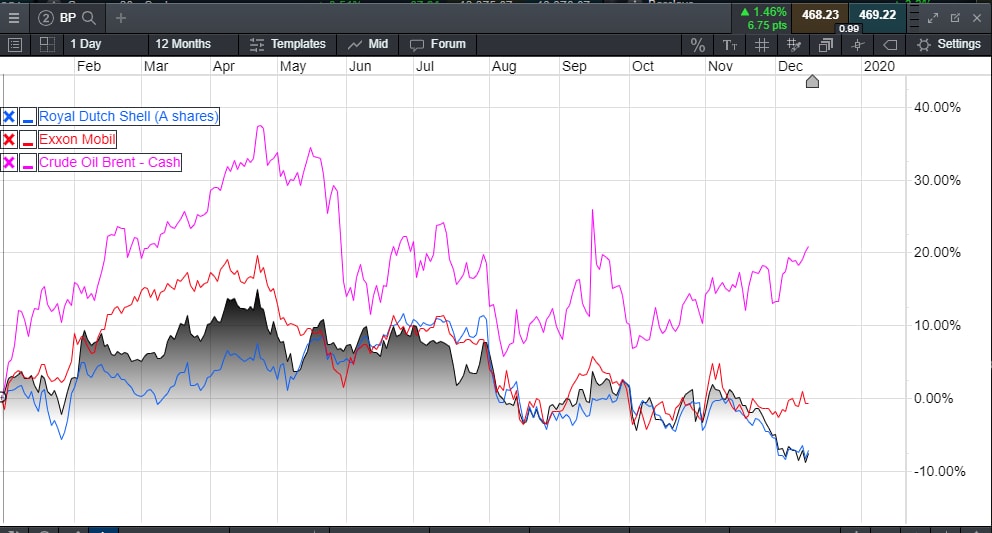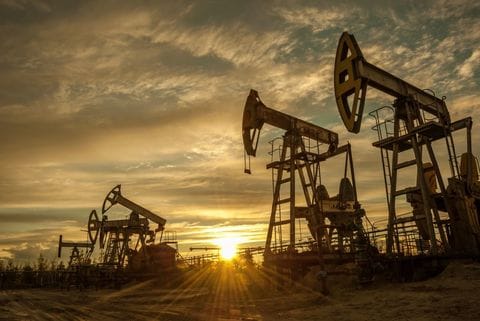Oil prices have traded in a much more subdued fashion this year, after hitting a Boxing Day low last year of just below $50 a barrel.
The recovery off those lows was helped by a sharp repricing of expectations about global central bank policy, which saw equity markets rebound strongly, after a bruising end to 2018, which saw heavy falls in global equity markets.
It’s not too hard to discover the reasons for this sudden turnaround at the beginning of this year. Central banks adopted a sudden change of tack when faced with the prospect of further big losses in equity markets, and a further rise in bond yields, they performed a sharp pivot on monetary policy.
Not only did the People’s Bank of China cut its reserve requirements ratio, the Chinese government cut some key tax rates as well. The Federal Reserve also conducted a rather deft policy pivot despite a bumper US payrolls report , with Fed chair Jerome Powell saying that the central bank would be patient on further rate rises, indicating that policymakers were having second thoughts about further rate hikes in the near term.
The European Central Bank took a little longer to come around to this way of thinking, having ended its asset purchase program at the end of 2018, taking another 9 months before restarting it again, but it would appear that the prospect of further rate rises is now firmly on the back burner, pretty much across the board.
The recovery in oil prices this year saw prices peak in April just above $75 a barrel, from where they’ve slowly slid back, as concerns about global growth has seen demand concerns outweigh any concerns about over supply.
Weak economic data out of China, as well as Germany, and increasing trade tensions, has seen manufacturing output sink sharply this year, with the global economy seeing the manufacturing sector sink into recession.
Since August oil prices have managed to find a floor in the mid $50’s, just above $55 a barrel and while we’ve seen significant unrest in the Middle East, including a drone attack on Saudi Arabian oil infrastructure, oil prices have struggled to hold onto gains above $65.
This is despite OPEC output coming down from the levels we saw a year ago. Last month OPEC countries produced 26.8m barrels a day, down from the 32.9m barrels in October last year. Non OPEC countries, including Russia also produced 18.8m barrels a day, bringing the daily output total to 45.6m barrels.
This is down from a combined total of 51m barrels just over a year ago, however while OPEC+ output has come down, the same can’t be said for US shale output and therein lies the OPEC rub, when it comes to managing prices.
A year ago US shale oil output was just over 7m barrels a day, however this has increased over the last 12 months with the US set to become a net energy exporter in 2020.
According to the EIA, US crude oil production is now at 12.5m barrels a day, which means to all intents and purposes, despite the OPEC cuts, oil output hasn’t come down that much from the levels we saw 12 months ago.
While oil prices have been surprisingly stable apart from the odd geopolitical spike the share price performance of the oil majors has been disappointing, despite numbers that, on the whole, have been fairly decent.
Both Royal Dutch Shell and BP have disappointed this year, while the performance over a two year period is even worse.
For companies that have been able to deliver consistently better than expected revenues and profits this year this is hugely disappointing, begging the question as to why these companies are underperforming, despite their high dividend returns, and a weaker pound, which automatically boosts its earnings numbers.

Source: CMC Markets
At its most recent set of results, for Q3 Shell recorded a 15% slump in profits from $5.6bn in 2018 to $4.8bn. The company also warned that it might miss its targets to reduce its debt levels and increase payouts to shareholders. This warning proved to be rather prescient as earlier today the company announced it was taking a Q4 impairment charge of between $1.7bn and $2.3bn, while reducing its capex guidance to the lower end of a $24bn and $29bn range.
The decline in oil and gas prices in the second half of the year is certainly one part of the reason for this underperformance, and judging by the direction of travel there could be further underperformance to come.
This reduction in guidance and impairment appears to show that management underestimated how much weaker oil prices would be in the latter part of this year, as well as underestimating future demand for oil, along with its by-products.
At a time when renewables are starting to become more mainstream this warning does raise questions as to whether management are sufficiently attuned to the changing global environment around energy and climate change.
This should be concern for investors given that Royal Dutch Shell, as well as other players in the sector who are significant dividend payers. With climate change moving quickly up the agenda oil companies are squarely in the firing line at a time when spending on renewables is a very small part of overall capex spend.
BP’s share price performance this year has also been disappointing when set against a benchmark of rising oil and gas production, and bumper profits for the UK oil giant.
In the first half of this year a solid performance saw profits rise to $5.1bn, helped by increased production along with oil prices in Q2 rising to highs of over $70 a barrel. While average prices have been lower this year when compared to 2018, the production efficiencies of both upstream and downstream operations has helped push revenues to levels close to last year, when total revenues got to within touching distance of $300bn.

Source: CMC Markets
In Q3 BP revenues also came in better than expected, at $2.25bn, helped by record output at Whiting and Cherry Point refineries, and point to a company that is much nimbler than it was a decade ago in the aftermath of Deepwater Horizon.
BP’s biggest problem, and one they share with Shell, is its ability to adapt to a changing investment climate, when it comes to protecting the environment. Tackling climate change has become a much more mainstream issue in 2019, and in that context investors are being increasingly pressured to steer away from companies that are perceived as being damaging to the environment.
Big oil companies fall into this category and while both BP and Royal Dutch Shell are diversifying more and more into renewables, it is still a very small percentage of their capex budgets.
In order to build on their renewable credentials both companies need to maintain the cash flow from their existing business in order to burnish their credentials in pushing renewables, as well as getting on with the business of cutting their high debt levels. This is expected to be a tricky balancing act.
Of the two companies BP has the biggest problem here, with a gearing over 30% and while senior management have somewhat belatedly started to deal with this with the sale of the Alaska business to Hilcorp for $5.6bn, it has been somewhat late in coming.
BP is also planning up to another $5bn of disposals over the next couple of months to bring the total divestment amount to $10bn by year end, and help bring it into line with the rest of the industry between 25% and 30%.
Shell has similar problems when it comes to renewables as well as cutting its debt levels, although they are lower at about a 25% gearing. In terms of the number of clean energy deals done this year Shell has been the most active investor, according to a report by BloombergNEF.
In November the company bought French floating wind turbine company Eolfi, and said it would devote 10% of yearly spending to new energy projects by 2025. At a time when climate issues are rising up the political agenda, this seems rather low.
With renewables likely to become a growing part of the UK and the worlds energy needs, companies like BP and Shell have the financial clout to be able to deliver solutions quicker than governments, and with awareness surrounding climate issues rising as a result of the antics of organisations like Extinction Rebellion, the oil majors need to show that they are at the forefront of climate solutions.
Currently capital expenditure around renewables remains well below the levels allocated to big oil and gas projects.
This needs to change, and it will be new CEO at BP, Bernard Looney, as well as Shell CEO Ben van Buerden’s problem as to how they go about tackling the issue of transitioning away from fossil fuels towards renewables, at pace that keeps the competing claims of shareholders and climate activists happy. There is also the risk of government intervention as politicians come under increasing pressure to discourage fossil fuel usage, and drive investment in renewables.
As we look ahead to 2020 and the prospect for the UK’s two biggest dividend payers the outlook is becoming much more uncertain given the problems facing what is still an important industry for UK investment and pension fund returns.
Whether or not we see a better performance in the months ahead is likely to depend on firstly whether the current levels seen in the oil price so far this year are sustained, but also in how successful both companies are in diversifying away from their traditional business models.
Both have made decent progress in terms of their gas businesses and in cutting costs but more progress needs to be made, particularly around renewables.
The biggest concern continues to be BP, in that its high debt levels and wafer thin dividend cover still make it vulnerable to economic slowdowns, as well as further drops in demand. In its favour, breakeven costs are lower than a year ago, but a sustained move below $50 a barrel, would raise concerns, about the company’s ability to maintain its dividend.
Disclaimer: CMC Markets Singapore may provide or make available research analysis or reports prepared or issued by entities within the CMC Markets group of companies, located and regulated under the laws in a foreign jurisdictions, in accordance with regulation 32C of the Financial Advisers Regulations. Where such information is issued or promulgated to a person who is not an accredited investor, expert investor or institutional investor, CMC Markets Singapore accepts legal responsibility for the contents of the analysis or report, to the extent required by law. Recipients of such information who are resident in Singapore may contact CMC Markets Singapore on 1800 559 6000 for any matters arising from or in connection with the information.








